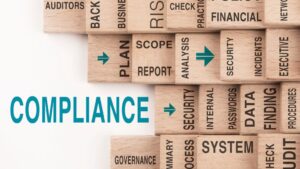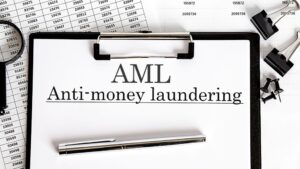Understanding Regulatory Requirements
To effectively combat money laundering and protect the integrity of the financial system, organizations operating in regulated sectors are required by law to provide Anti-Money Laundering (AML) training. This training plays a crucial role in equipping professionals with the knowledge and skills necessary to identify and prevent illicit financial activities. Failure to comply with AML regulations can result in severe consequences, including financial penalties, reputational damage, and even criminal prosecution. Therefore, understanding the regulatory requirements for AML training is essential for businesses and individuals alike.
Importance of AML Training
The importance of AML training cannot be overstated. It serves as a vital tool in the fight against money laundering and terrorist financing activities. By educating professionals on the key principles, techniques, and red flags associated with money laundering, organizations can build a strong line of defense and mitigate the risk of unwittingly facilitating illicit financial transactions.
Effective AML training enables individuals to recognize suspicious activities, conduct proper due diligence, and report any concerns to the appropriate authorities. This heightened awareness and vigilance contribute to maintaining the integrity of the financial system and safeguarding businesses from potential legal, financial, and reputational damage.
Legal Obligations for AML Training
Organizations operating in regulated sectors are legally obliged to provide AML training to their employees. Regulations such as the Money Laundering Regulations 2017 in the UK outline specific requirements for AML training, including the coverage of relevant topics and the monitoring of staff competence. These regulations aim to ensure that professionals are well-equipped to fulfill their obligations in preventing money laundering and terrorist financing.
AML training should be tailored to different roles and responsibilities within an organization. For example, employees who have direct contact with customers may require comprehensive training on customer due diligence and transaction monitoring, while senior management and board members may need a deeper understanding of AML policies and risk management strategies.
By adhering to the legal obligations for AML training, organizations demonstrate their commitment to regulatory compliance and contribute to the overall efforts in combating financial crime.
To stay up to date with the ever-evolving regulatory landscape and ensure compliance, it is essential for organizations to regularly review and update their AML training programs. By aligning training with industry best practices and leveraging guidelines from regulatory authorities, businesses can enhance their AML training effectiveness and mitigate the risks associated with money laundering and terrorist financing activities.
For more information on AML training requirements and best practices, refer to our articles on AML training certification, anti-money laundering training requirements, and AML training for financial institutions.
Key Components of AML Training
To comply with regulatory requirements and effectively combat money laundering and financial crimes, organizations must implement robust Anti-Money Laundering (AML) training programs. These programs consist of key components designed to equip employees with the necessary knowledge and skills to fulfill their obligations in preventing money laundering and terrorist financing.
Training Modules for AML Compliance
AML training programs should encompass various training modules tailored to the specific needs of employees based on their roles and responsibilities. These modules may include:
Employee Training: This module provides a foundation for all employees, introducing them to the concepts, regulations, and best practices related to AML compliance. It covers topics such as the importance of AML compliance, legal obligations, and the role of employees in detecting and reporting suspicious activities.
Specialized Training: Certain employees, such as those working in high-risk areas or with direct customer interactions, may require specialized training. This module focuses on specific AML compliance requirements and procedures relevant to their roles. It helps employees understand customer due diligence, know your customer (KYC) procedures, sanctions screening, and other critical areas related to their job functions.
Ongoing Training: AML regulations and financial crime risks are constantly evolving. Ongoing training ensures that employees stay up to date with the latest regulatory developments, emerging trends, and evolving typologies of money laundering and financial crimes. This module helps employees adapt to changing circumstances and reinforces their understanding of AML compliance measures.
Refresher Training: Refresher training is essential to reinforce employees’ knowledge and skills, particularly after significant regulatory changes or as a periodic reminder. It provides an opportunity to review key concepts, reinforce best practices, and address any areas of concern or improvement identified through monitoring and assessment.
Topics Covered in AML Training
AML training programs cover a wide range of topics to enhance employees’ ability to detect, prevent, and report potential money laundering and financial crimes. Some of the key topics covered include:
Customer Due Diligence (CDD): This topic focuses on the importance of conducting thorough due diligence on customers to identify and verify their identities, assess their risk profiles, and understand the nature and purpose of their transactions. It covers KYC procedures, beneficial ownership identification, and ongoing monitoring of customer activities.
Suspicious Activity Reporting: Employees learn how to recognize and report suspicious activities that may indicate potential money laundering or terrorist financing. This topic provides guidance on identifying red flags, understanding transaction patterns, and effectively documenting and reporting suspicious activities to the appropriate authorities.
Sanctions Screening: Sanctions screening involves checking individuals, entities, or countries against government-issued lists to ensure compliance with international sanctions regimes. Training on sanctions screening equips employees with the knowledge and skills to identify and handle transactions involving sanctioned individuals or entities.
Recordkeeping and Reporting Obligations: This topic covers the importance of maintaining accurate records and fulfilling reporting obligations, such as filing currency transaction reports (CTRs) or suspicious activity reports (SARs) as required by regulatory authorities. It emphasizes the significance of proper documentation and the consequences of non-compliance.
By covering these and other relevant topics, AML training programs provide employees with the tools and knowledge they need to effectively contribute to the detection and prevention of money laundering and financial crimes. Organizations should regularly evaluate and update their training programs to ensure they align with the latest regulatory requirements and industry best practices. For more information on AML training regulations, guidelines, and best practices, check out our comprehensive resources on aml training regulations, aml compliance training guidelines, and aml training best practices.
Effective Implementation of AML Training
To ensure the effectiveness of Anti-Money Laundering (AML) training programs, organizations must focus on two key aspects: tailoring the training to roles and responsibilities and implementing continuous monitoring and assessment.
Tailoring Training to Roles and Responsibilities
AML training should be customized to address the specific roles and responsibilities of individuals within an organization. Different employees have varying levels of exposure to AML risks, and tailoring the training to their needs enhances its relevance and effectiveness.
For example, employees directly involved in customer onboarding and transaction monitoring may require in-depth training on customer due diligence, know your customer (KYC) procedures, and suspicious activity reporting. On the other hand, employees in managerial or executive positions may benefit from training that focuses on their oversight responsibilities and the broader AML regulatory landscape.
By tailoring the training content to specific roles, organizations can ensure that employees receive the knowledge and skills necessary to fulfill their obligations effectively. This targeted approach also helps to minimize training fatigue and increase engagement, as employees can better understand the direct relevance of the training to their daily tasks.
Continuous Monitoring and Assessment
Continuous monitoring and assessment of AML training programs are crucial to identify any gaps or areas that require improvement. This ongoing evaluation ensures that organizations maintain compliance with regulatory requirements and stay ahead of evolving financial crime risks.
Regular assessments can take various forms, including quizzes, exams, or scenario-based simulations. These assessments allow organizations to gauge the effectiveness of the training and identify areas where additional reinforcement may be necessary. By measuring the retention and understanding of key AML concepts, organizations can address any knowledge gaps and provide targeted support to employees.
In addition to assessments, organizations should implement continuous monitoring mechanisms to track the application of AML training knowledge in real-world scenarios. This can involve periodic reviews of employees’ adherence to AML policies and procedures, as well as analysis of transaction monitoring alerts and suspicious activity reports. By evaluating the practical application of AML training, organizations can identify areas where additional guidance or training is needed.
Continuous monitoring and assessment provide valuable insights into the effectiveness of AML training programs, enabling organizations to make informed decisions regarding program enhancements and updates. By staying proactive in their approach to training evaluation, organizations can ensure that their AML compliance efforts remain robust and aligned with regulatory expectations.
To meet regulatory requirements effectively, organizations can leverage AML training programs offered by reputable providers such as the Financial Crime Academy. These programs are designed to fulfill regulatory expectations efficiently and effectively, promoting a strong culture of compliance within the workforce.
By tailoring AML training to roles and responsibilities and implementing continuous monitoring and assessment, organizations can enhance their AML compliance efforts. This proactive approach not only helps mitigate the risks associated with money laundering and terrorist financing but also demonstrates a commitment to meeting regulatory requirements and safeguarding the integrity of the financial system.
Consequences of Non-Compliance
Non-compliance with regulatory requirements for AML training can have serious ramifications for organizations. It is essential to understand the potential consequences to emphasize the importance of adherence to anti-money laundering (AML) regulations.
Financial Penalties and Legal Sanctions
Failure to meet AML compliance requirements can result in significant financial penalties and legal sanctions. Regulatory bodies have the authority to impose fines and sanctions on organizations found to be non-compliant. For example, Capital One was fined $390 million for willful and neglectful violations of the Bank Secrecy Act (Unit21).
The financial penalties vary based on the severity of the non-compliance and the jurisdiction’s regulations. Organizations may face fines ranging from thousands to millions of dollars, depending on the extent of the violations. These penalties can have a substantial impact on an organization’s financial health and stability.
Reputational Damage and Loss of Trust
The consequences of non-compliance with AML regulations extend beyond financial penalties and legal repercussions. Non-compliance can lead to significant damage to an organization’s reputation, resulting in a loss of customer trust, business opportunities, and overall stability in the marketplace.
When an organization is involved in money laundering or other financial crimes, the public perception of its integrity and ethical standards can be severely compromised. This loss of trust can lead to a decline in customer loyalty, reduced business partnerships, and a negative impact on the organization’s bottom line.
Reputation is a valuable asset for any organization, and rebuilding trust after reputational damage can be a challenging and time-consuming process. Therefore, investing in robust AML training to ensure compliance is crucial for safeguarding the integrity and credibility of the organization.
By understanding the potential consequences of non-compliance, organizations can recognize the importance of implementing effective AML training programs. Adequate training helps employees and management stay informed about the latest AML regulations, best practices, and risk mitigation strategies. This knowledge enables organizations to protect themselves from financial penalties, legal sanctions, and reputational damage associated with non-compliance.
For more information on AML training requirements and best practices, please visit our articles on aml training certification, anti-money laundering training requirements, and aml training program standards.
Evolving Regulatory Landscape
As the financial landscape evolves, so do the regulatory requirements for Anti-Money Laundering (AML) training. Staying updated with regulatory expectations and aligning training with industry best practices are vital for organizations to effectively combat financial crime and ensure compliance.
Staying Updated with Regulatory Expectations
Regulatory requirements for AML training are ever-evolving, reflecting the changing nature of money laundering risks and the need to safeguard the integrity of the financial system. Organizations must remain informed and updated on the latest policies and guidelines to ensure compliance.
Keeping track of regulatory updates can be achieved through various means. Monitoring regulatory bodies’ websites, attending industry conferences and seminars, and subscribing to relevant newsletters or publications can provide valuable insights into emerging requirements. Organizations can also leverage the expertise of compliance professionals and consultants who specialize in AML and can provide guidance on regulatory changes.
By staying updated with regulatory expectations, organizations can proactively adapt their AML training programs to address new risks and challenges effectively. This ensures that employees receive the most relevant and up-to-date training to mitigate the risks of money laundering and other financial crimes.
Aligning Training with Industry Best Practices
In addition to regulatory requirements, organizations should align their AML training programs with industry best practices. Best practices encompass a range of strategies and approaches that have proven effective in combating financial crime.
To align training with industry best practices, organizations can:
Incorporate case studies and real-life examples: By presenting real-world scenarios, employees can gain a practical understanding of how money laundering operates and the red flags to watch out for. This enables them to make informed decisions and take appropriate actions to prevent and detect suspicious activities.
Provide role-specific training: Different roles within an organization may have unique AML responsibilities. Tailoring training to address job-specific requirements ensures that employees understand their obligations and can effectively carry out their AML responsibilities. This includes providing specialized training for employees in customer-facing roles, board of directors, and senior management.
Implement ongoing training and refreshers: A one-time training session may not be sufficient to reinforce AML knowledge and skills. Regular refresher training sessions help employees stay up-to-date with the latest AML trends, regulatory changes, and emerging typologies. This ensures that their knowledge remains current and they can effectively identify and respond to evolving money laundering risks.
Foster a culture of compliance: A strong culture of compliance is crucial for successful AML efforts. Organizations should encourage open communication, provide avenues for reporting suspicious activities, and emphasize the importance of compliance throughout the organization. Training should reinforce the organization’s commitment to compliance and the consequences of non-compliance.
By aligning AML training with industry best practices, organizations can strengthen their defenses against money laundering, terrorist financing, and other financial crimes. It also demonstrates their commitment to effective AML practices, which can enhance their reputation and instill trust among stakeholders.
To ensure compliance with regulatory requirements and industry best practices, organizations should regularly assess and update their AML training programs. By investing in comprehensive and up-to-date training, organizations can mitigate the risks associated with financial crime and contribute to the overall integrity of the global financial system.
Frequency and Legal Requirements
To maintain compliance with Anti-Money Laundering (AML) regulations, organizations must adhere to specific frequency and legal requirements for AML training. These requirements ensure that employees receive the necessary knowledge and skills to effectively detect and prevent money laundering and other financial crimes.
Refresher Training and Regulatory Compliance
Regular refresher training is a crucial aspect of AML compliance. As money laundering techniques evolve and regulatory expectations change, it is essential to keep employees up-to-date with the latest developments. Refresher training provides an opportunity to reinforce important concepts, review regulatory updates, and address any emerging risks.
The frequency of refresher training can vary depending on regulatory requirements and industry best practices. In the United Kingdom, for example, all staff involved in relevant business areas must receive AML training with regular refresher training to ensure they stay up-to-date with current regulations and procedures (Great Chatwell Academy). It is crucial for organizations to consult applicable regulations and guidelines specific to their jurisdiction to determine the frequency of refresher training required.
AML Training as a Legal Obligation
AML training is not only a best practice but also a legal obligation for organizations operating in regulated industries. Regulators and supervisory authorities worldwide mandate AML training to mitigate the risk of financial crime and ensure the integrity of the financial system.
The specific legal requirements for AML training may vary across jurisdictions and industries. However, the overarching goal remains the same: to equip employees with the knowledge and skills necessary to identify and report suspicious activities, comply with customer due diligence requirements, and understand the implications of non-compliance.
By providing comprehensive AML training programs that fulfill regulatory requirements, organizations can demonstrate their commitment to compliance and protect themselves from potential penalties and reputational damage. Investing in AML training not only helps organizations meet their legal obligations but also fosters a culture of compliance and vigilance within the workforce.
It is crucial for organizations to stay informed about the regulatory landscape and any changes to AML training requirements. By aligning training programs with industry best practices and regulatory expectations, organizations can ensure that their employees receive the necessary knowledge and skills to effectively combat money laundering and other financial crimes.
To learn more about AML training and its importance in regulatory compliance, you can explore our articles on aml training certification, anti-money laundering training requirements, aml training for employees, aml training for board of directors, aml training regulations, aml compliance training guidelines, aml training best practices, aml training program standards, and aml training for financial institutions. These resources provide further insights into the importance of AML training and how organizations can meet regulatory expectations.




